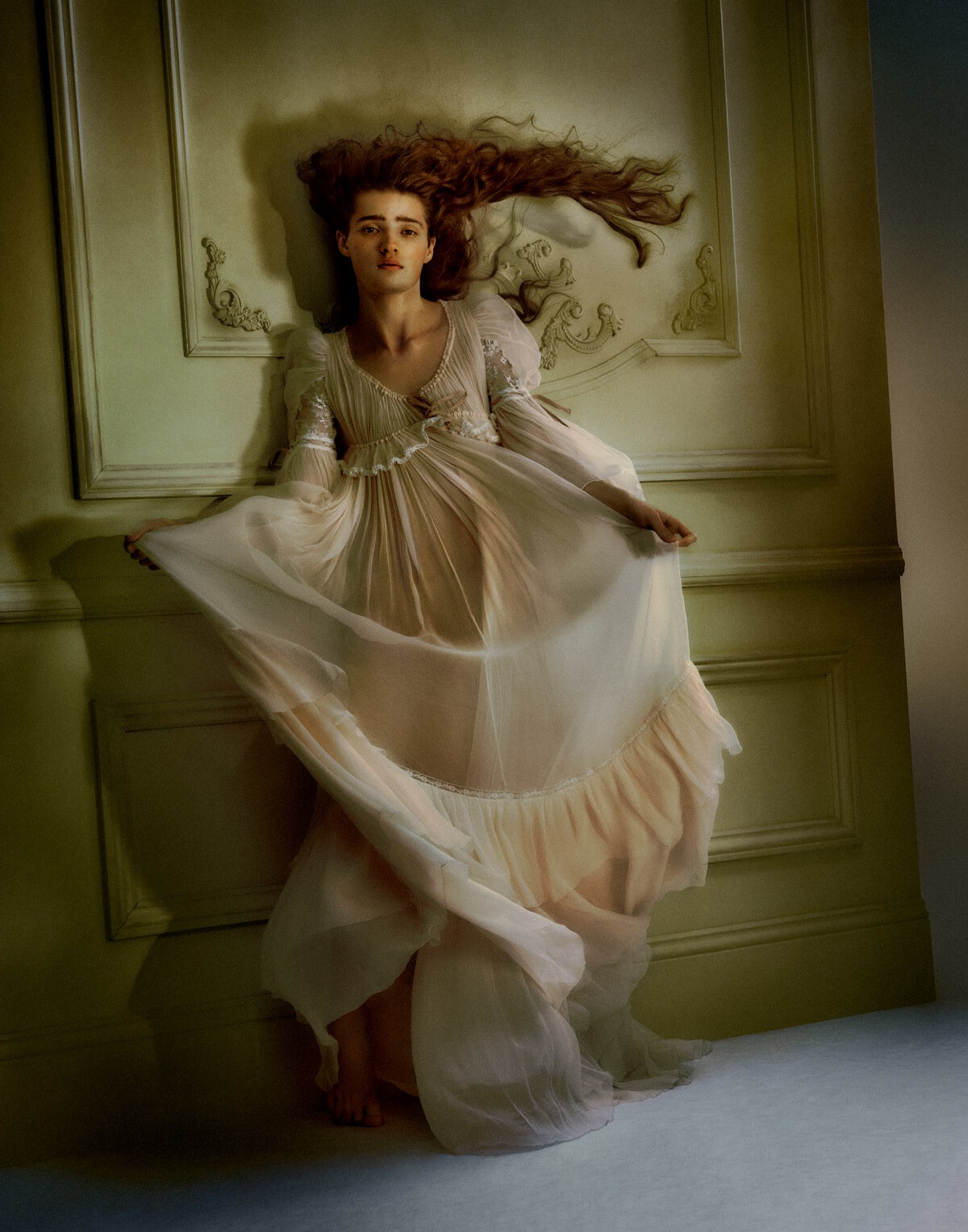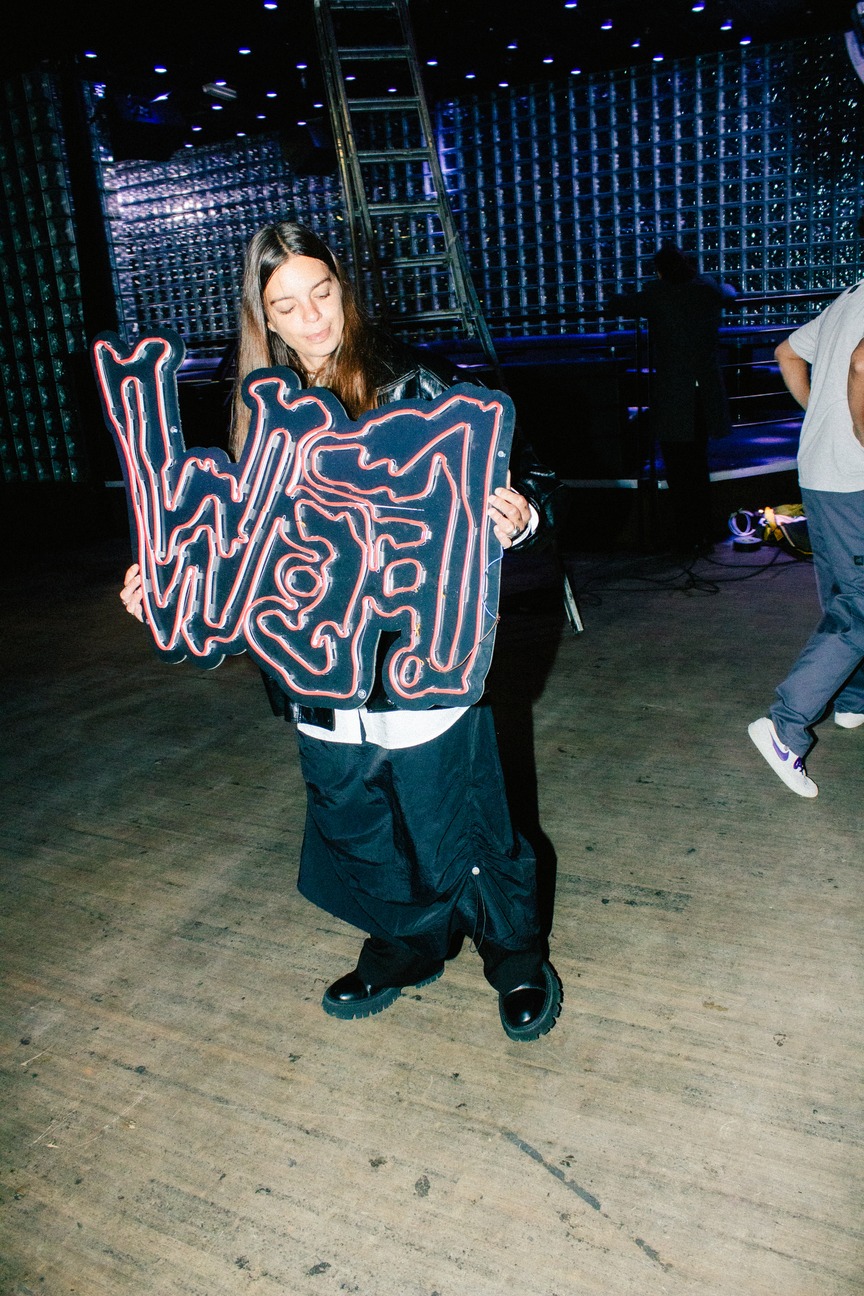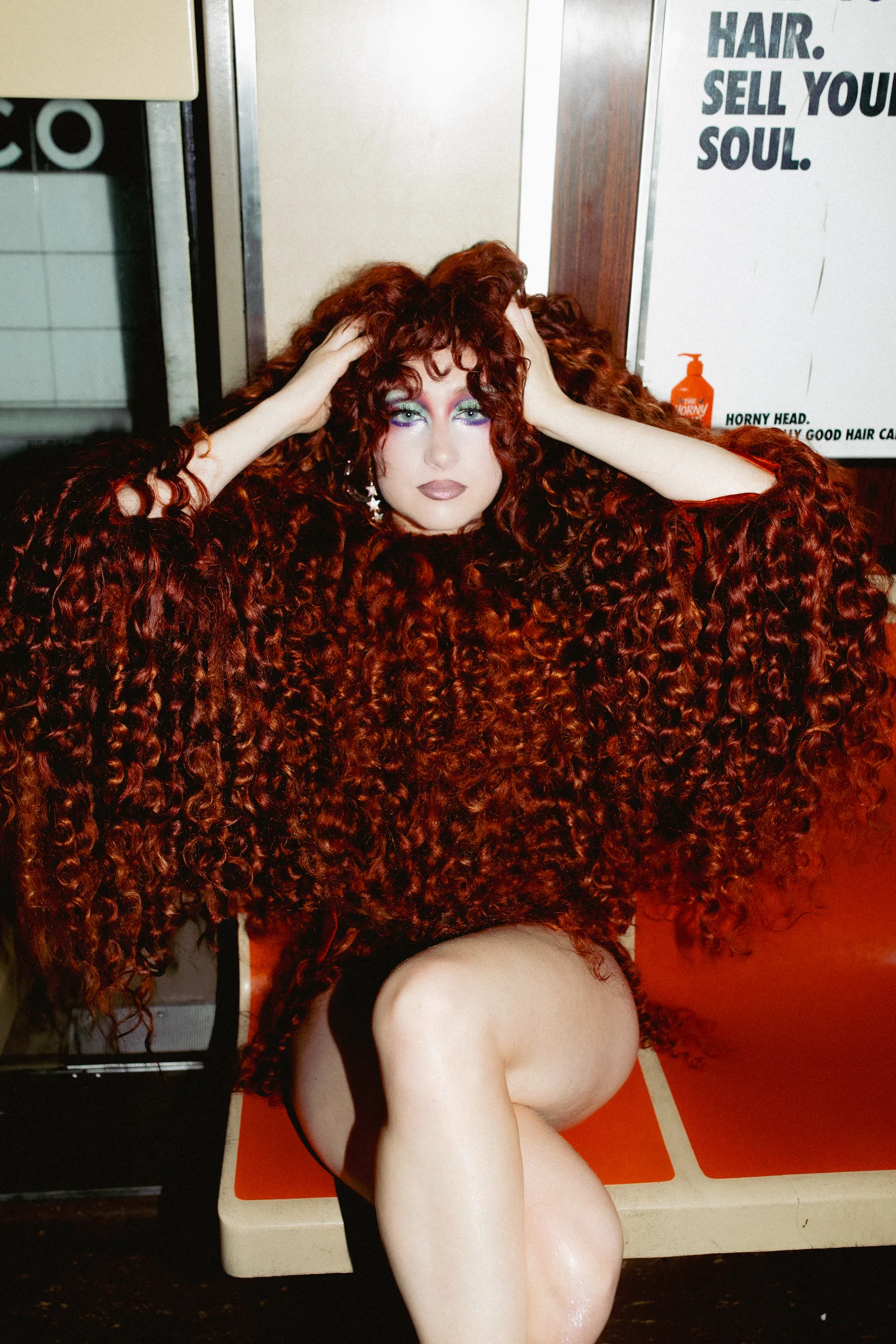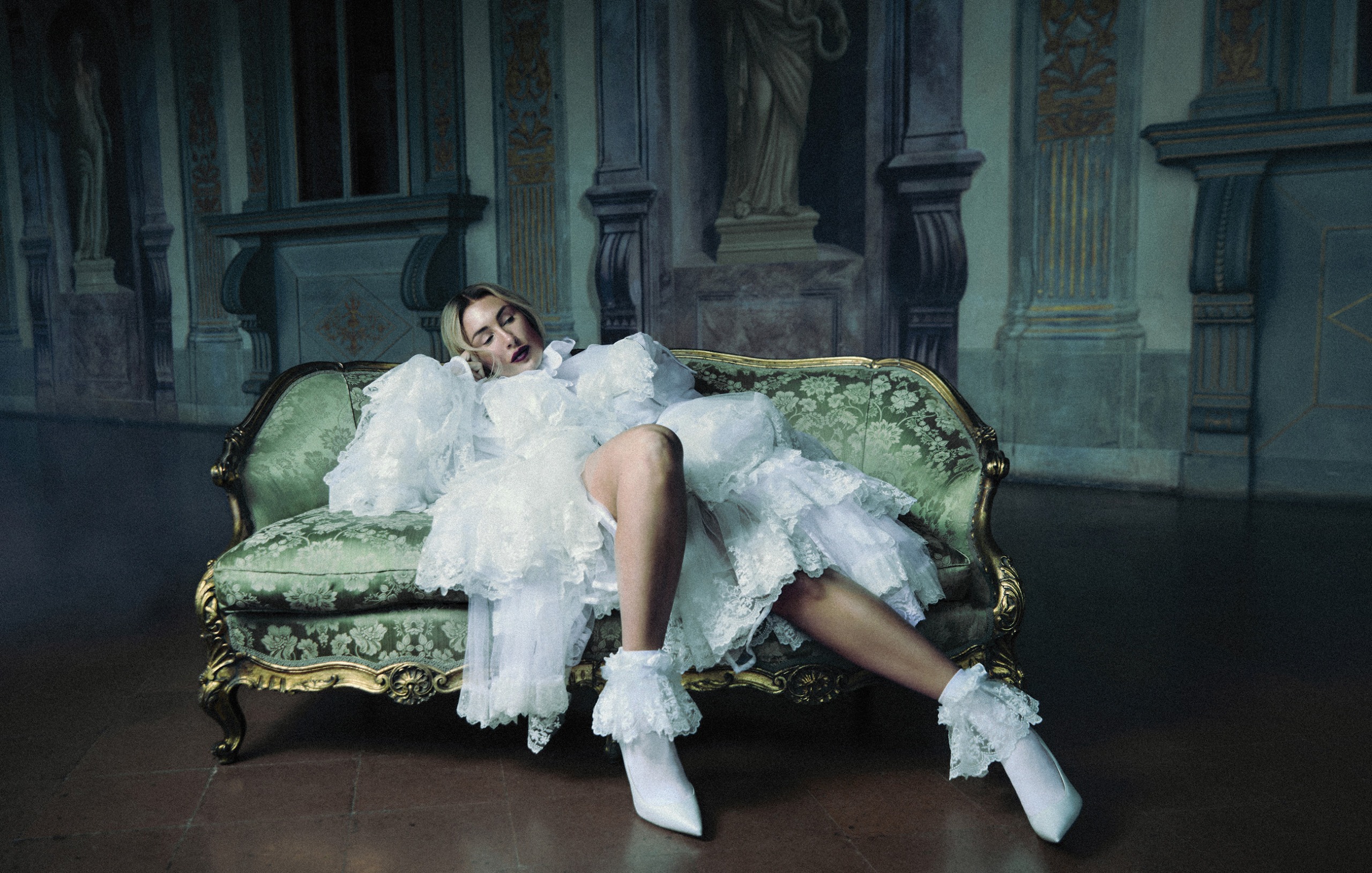
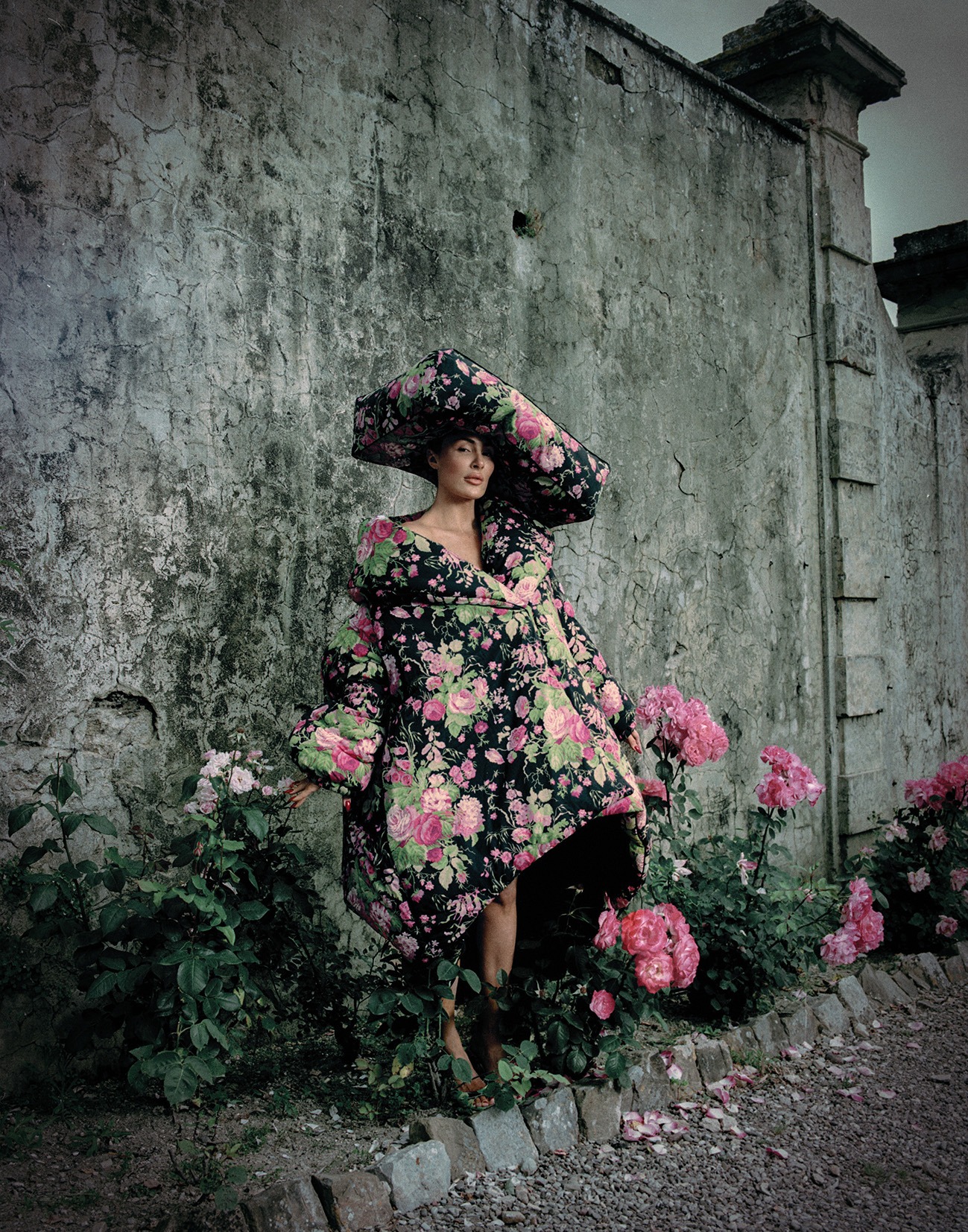
The queen of the Balkans, trap queen, Balkan woman… Senidah is one of those names with so many nicknames that it’s hard to know where the myth ends and the person begins – and vice versa. In the summer whirl of festivals, concerts, shoots, and breaks, Teodora Jeremić spoke with her about endless inspiration, roses and girls, and moments of peace.
When I first heard the line “tebi seansa, meni renesansa” (“your séance, my renaissance”), I remember thinking how it was a truly wonderful wish and message to yourself at that point where, sooner or later, we all find ourselves—when a breakup becomes inevitable. It’s dignified, strong, and self‑encouraging. Later, after experiencing a quite painful breakup, the distribution of what went to me and to the other side shifted—but the sense of rebirth remained as a promise and idea that time passing might bring relief, if not a solution.
Fast forward to me sitting in a Renaissance villa in Florence, where we’re shooting this story. My favorite place all through the shoot was the chair in the Pandolfo Sacchi room, because it compresses everything. From that single point you can see, on one side, the entire ceiling where, by chance or design, the fresco narrates the whole myth of Chronos, god of time—and on the other, the myth of Psyche and Eros painted on the once‑grand wall of the next room. “I’m drawn to imperfections—they sometimes make a song perfect. I like it gentle, but I don’t like it perfect,” Senidah said through laughter. I thought about how strong and intentional the connection between these two myths is. In the search for Love (Eros), the Soul (Psyche) suffers Loneliness and Grief, while Venus’s servants, and Time, devour but also create. Gaze fixed on the frescoes, I wondered how many times we ourselves can be reborn. Do we come alive again when we finally get over someone? When do we begin to live our authentic selves? Or when we finally step onto the path we once feared? Or are these just tiny deaths and new beginnings? All of these, and so much more, are the story of Senidah.
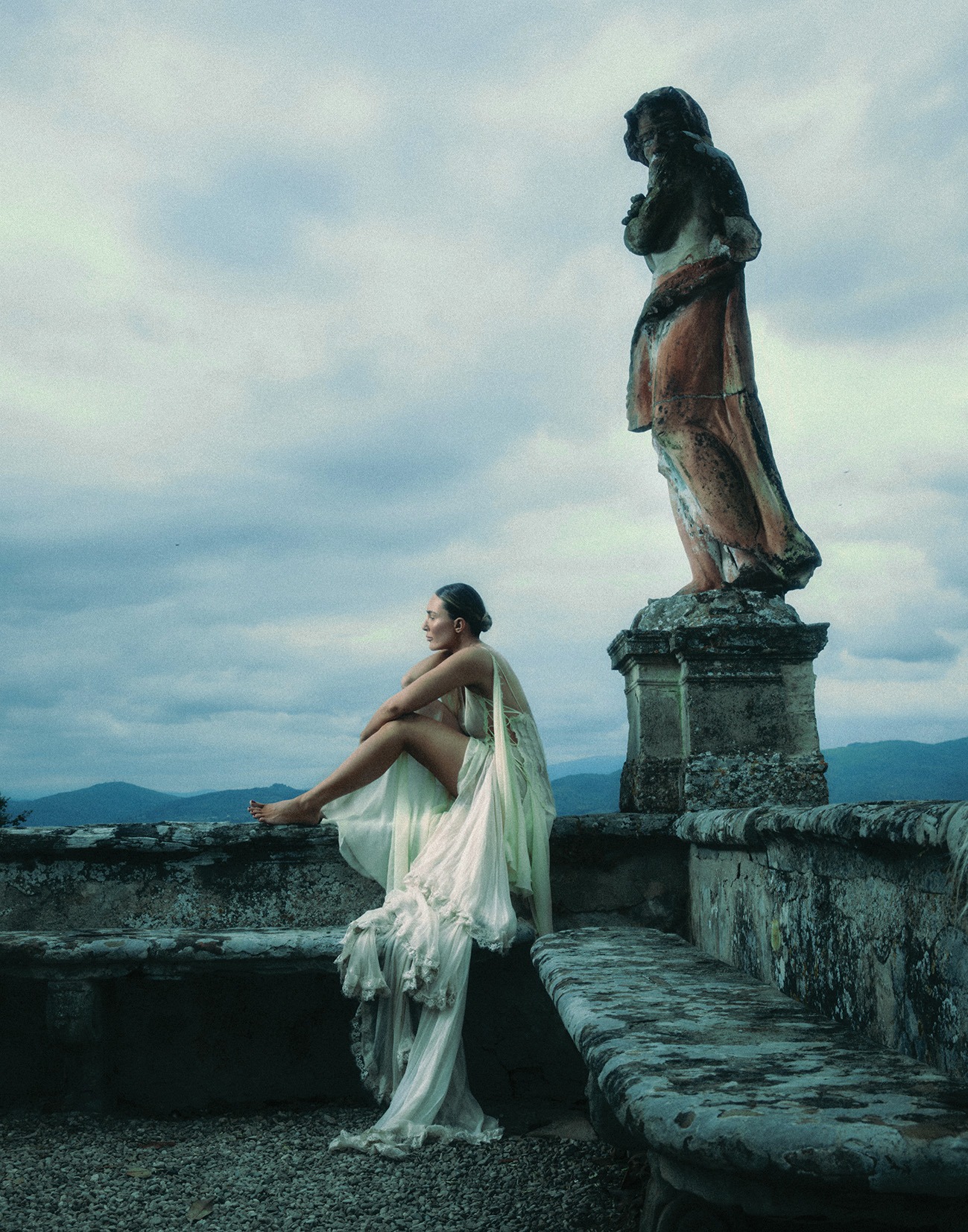
I have this theory: people who have the privilege to create—more so than others—have the chance for new lives. And people who truly love more than love itself have meaning. Although I’m often ashamed of my belief that love is the most important “secondary thing” in the world, I had to share that at the start. I kicked off the conversation backwards. If you create something so passionate, powerful, fierce—then is love the driving force? I practically blurted it out. “Life is the driver,” Senidah replied, laughing. “Everything that happens—beauty and ugliness—can be useful. Love is a big factor. Usually when I’m really happy, I manage to mess it up subconsciously. If everything’s great, something has to happen. When the bad does happen—when I screw up, or I’m feeling low—that’s when the best songs begin. When I’m ecstatic, nothing happens. But emotions, suffering, tears—they bring the best songs. Like ‘Moj mesec,’ ‘Moj si high,’ ‘Da li ti nedostajem.’ Those songs were made last year when I was emotionally in a bad place. Now it’s a bit easier. When a person releases emotion, it becomes easier.” I didn’t want to tell her that I wasn’t sure it was purely unconscious—especially because I too understand that urge to break something for no reason. You don’t forget the trickster inside you. And after all, isn’t Psyche the one who broke everything out of curiosity—and went through so many trials to earn love again? And Eros, who pierced himself with his own arrow? No one is spared from these things.
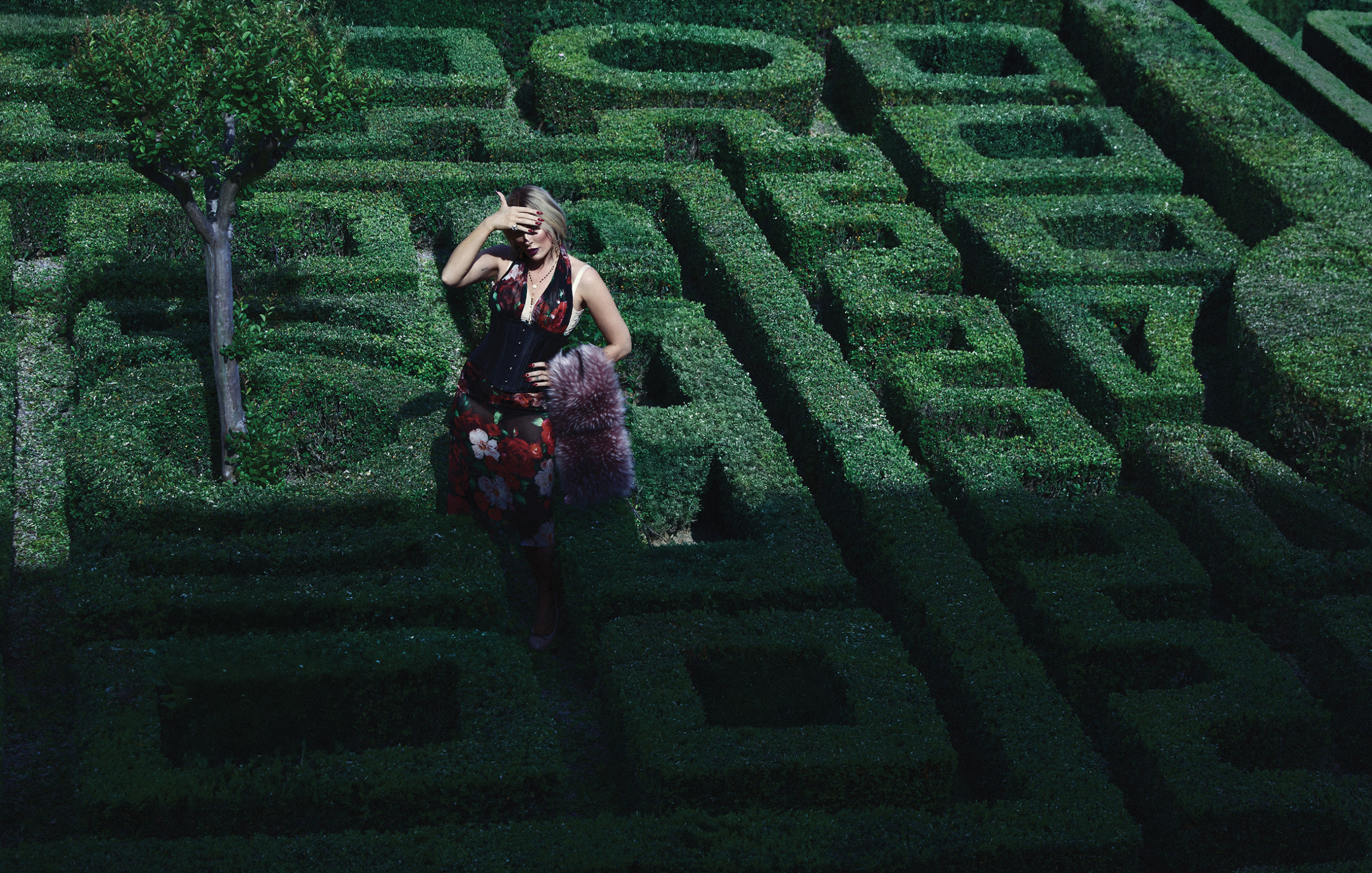
It’s no coincidence we’re shooting in a place thick with history and mythology. Senidah herself is mythological, and that was clear from her song “Slađana”—and even more so now. “I didn’t even know how it happened. I worked with the band Muff, and I always had to adapt the sound—make it fit with all of us, not be too strong. Then one day Cazzafura played me the beat, and when I heard it, I knew—it was something inside me that hadn’t been able to come out until then. We released the song, and for days nothing happened. And I gave it my all. Then, it exploded—everyone called me. I didn’t want to sign with anyone, I wanted to stay with my team from Ljubljana, I wanted them to be part of this story I was beginning, and I knew I wanted it to be bigger. I refused to perform until I had my own repertoire—I didn’t want to sing other people’s songs, I wanted to sing mine.”
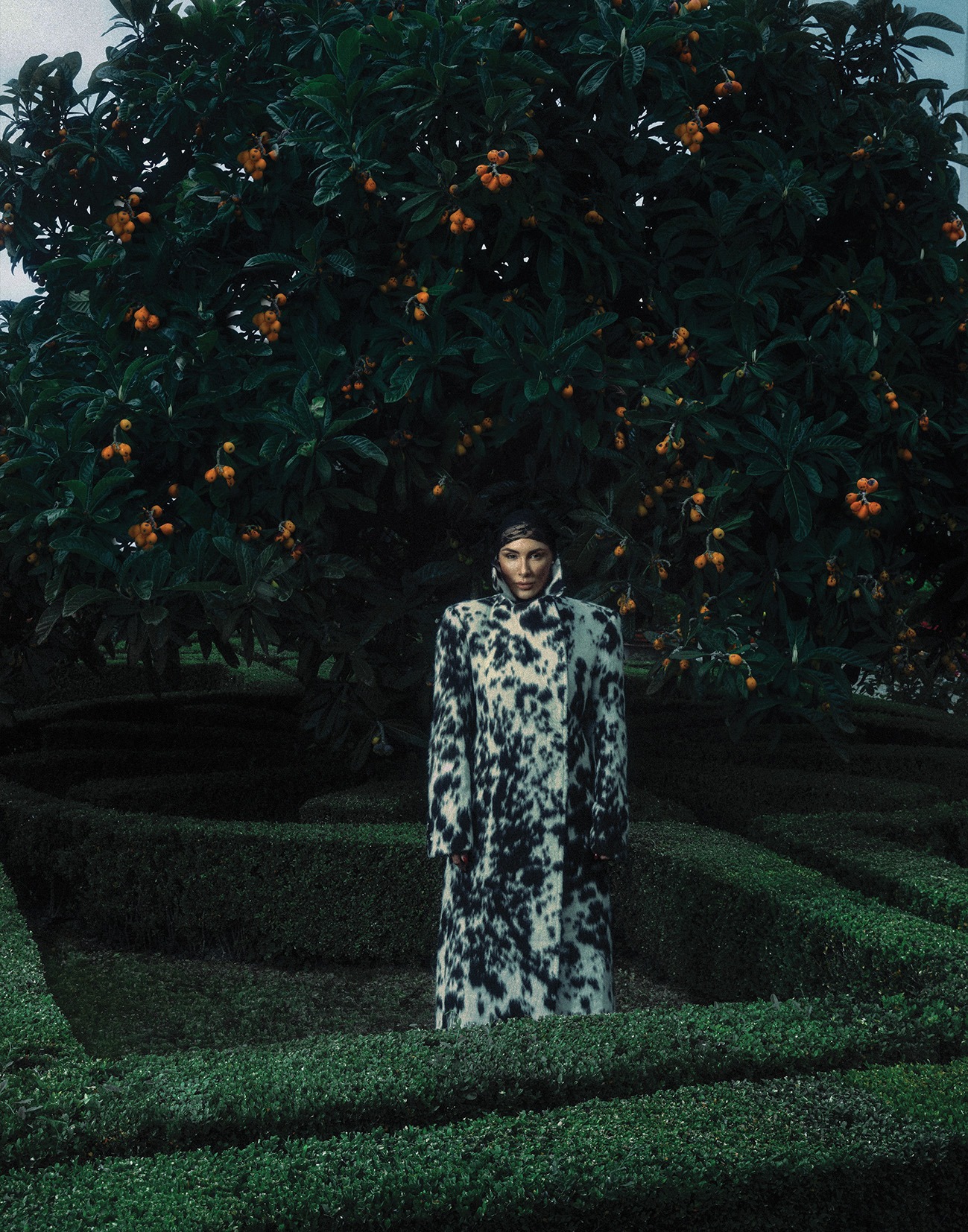
Her rise in the regional scene, her amazing ability to merge the unmergeable, has placed her in the mythic register—as someone who created her persona through pure authenticity. A rare skill. To resist being placed in categories, yet successfully draw from all. “That’s how it is here—people want to categorize you. You’re either folk, or pop. I don’t want to be either. Neither one—I want to be something else entirely. I love mixing. Someone once said I’m like Šemsa from New York, which I really liked.” I told her I thought she’s more than “okay”—that being the “Šemsa of New York” is a huge testament to her quality. And with such a combined heritage and origin, perhaps nothing less could be expected than a rich polyphony. Some people are given the complex role of being between nowhere and everywhere. “Throughout life I often felt I belonged nowhere—like people thought, ‘you’re not one of ours.’ It’s true: I didn’t have a Slovenian name, though I’m from Slovenia. I have a Bosnian name, though I’m not from there. My roots are from Montenegro. As a child I often visited relatives in Macedonia, but I also feel at home in Serbia. Over time I realized it’s my greatest advantage. It shaped my music. I grew up in Slovenia listening to foreign music—Guns N’ Roses, Michael Jackson, 2Pac and beyond. But when I’d go to Montenegro, my cousins would gather and sing sevdalinka songs. It all came together in me. I want to belong to everyone. That’s truly how I feel. It’s all just right.”
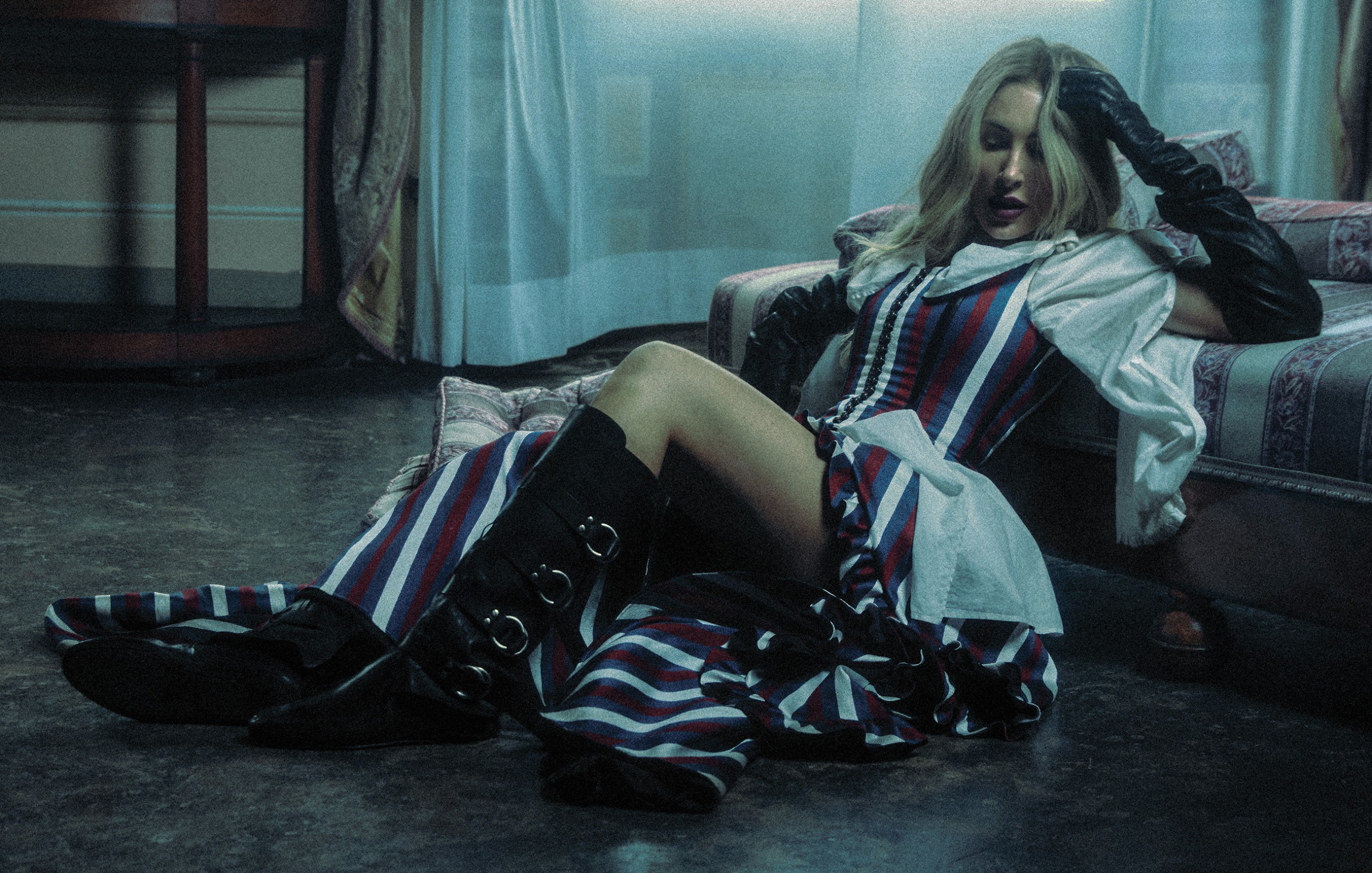
If there’s something Balkan, it’s that sentence: “it all combined inside me.” So much has combined—and keeps combining in all of us. If boundaries are meaningless anywhere, it’s here. The Balkans absorbed so many contradictions that it’s often impossible to define, yet we know it demands exploring personal “otherness” and converting it into strength. That undefinable Balkan stretches far beyond geography, recognized not just by visual signifiers, and Senidah manages to weave into the present moment both the delija who is a force of the winds, and the girl of the early frost, and she spreads her wings like a fairy descended from the sky. “I truly love that entire heritage, those beautiful words.” All languages have gorgeous words—and they should be used. From every language, take the most beautiful. When I worked only in Slovenian, I didn’t have access to all those words—for thirty‑odd years I couldn’t express myself like that, but I always looked forward to it, all those sevdalinka words I grew up with. It’s beautiful. Why not put only the most beautiful words in songs? Today, when I hear what’s out there—I personally would never sing it. I want only beautiful words. And let’s not forget the f’n magic,” she laughs.
Everyone needs magic—and it’s increasingly clear in today’s world—but not everyone finds it, except those who hear everything. I thought a lot about the phrase “ruža‑devojka” (“rose‑girl”), and realized I hadn’t heard anything so beautiful, precise, tender in a long time. If something is magical, it’s the tenderness and strength that this expression carries. The rose mentioned in almost every love song here has become more than an attribute—it’s personified. “To me, those are the girls from here. Such grace, such attitude. A rose that grows upright—with thorns and a beautiful bloom. Standing tall. That’s us.”
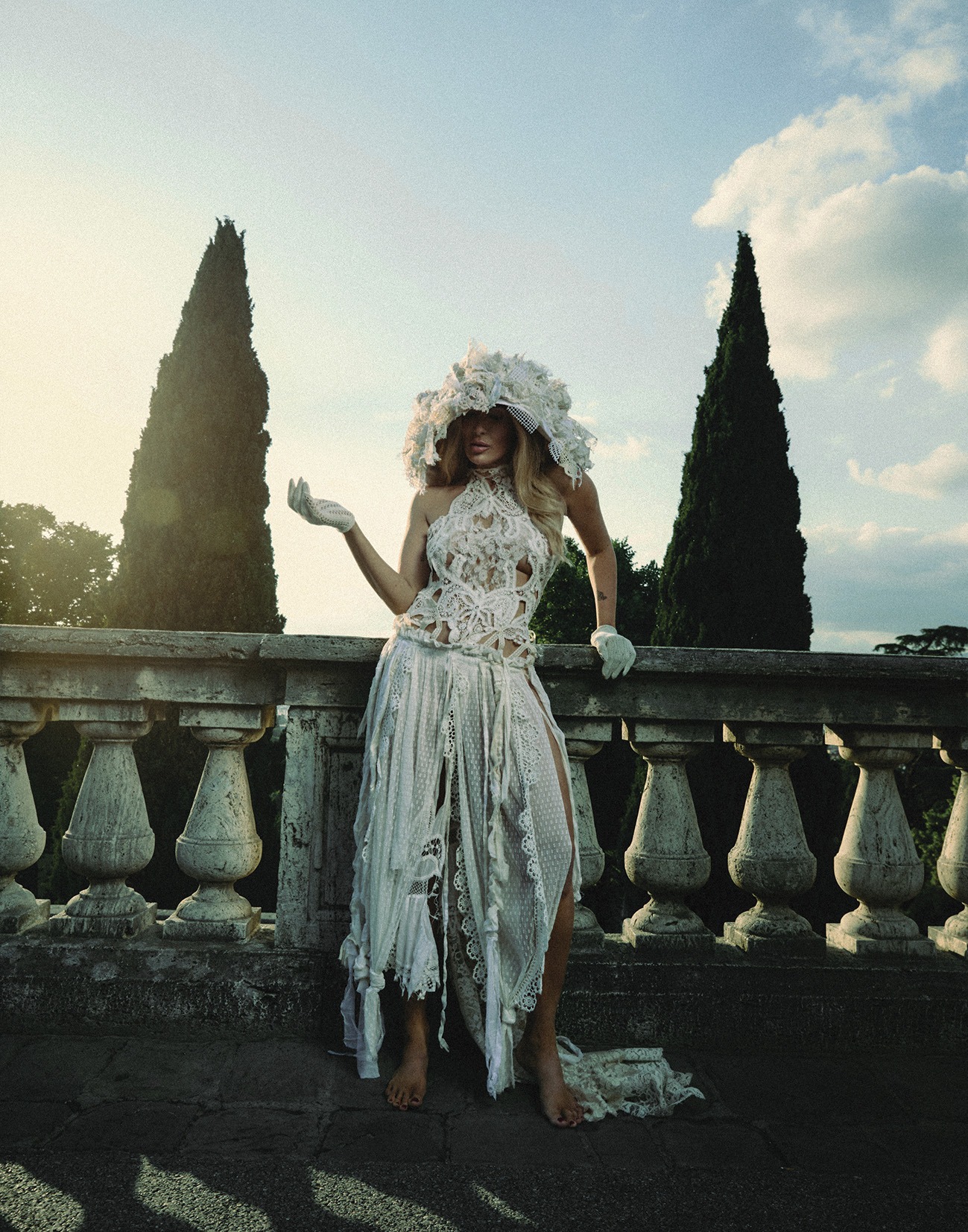
I nodded—because that definitely sounded like many women I know, strong above all. “You know, what it really means to be strong is always a question. To fight, that’s strength to me. To go through everything life brings and remain a fighter—with dignity. I learned that from my mother. She became a widow at under 30, with two daughters, and she was a true rose‑girl. She’s my eternal inspiration. She was always put together—never went to work without hair done and makeup, despite having so many problems. She was both mom and dad and did it all, always with her head held high. To me, that’s the very meaning of a Balkan woman.”
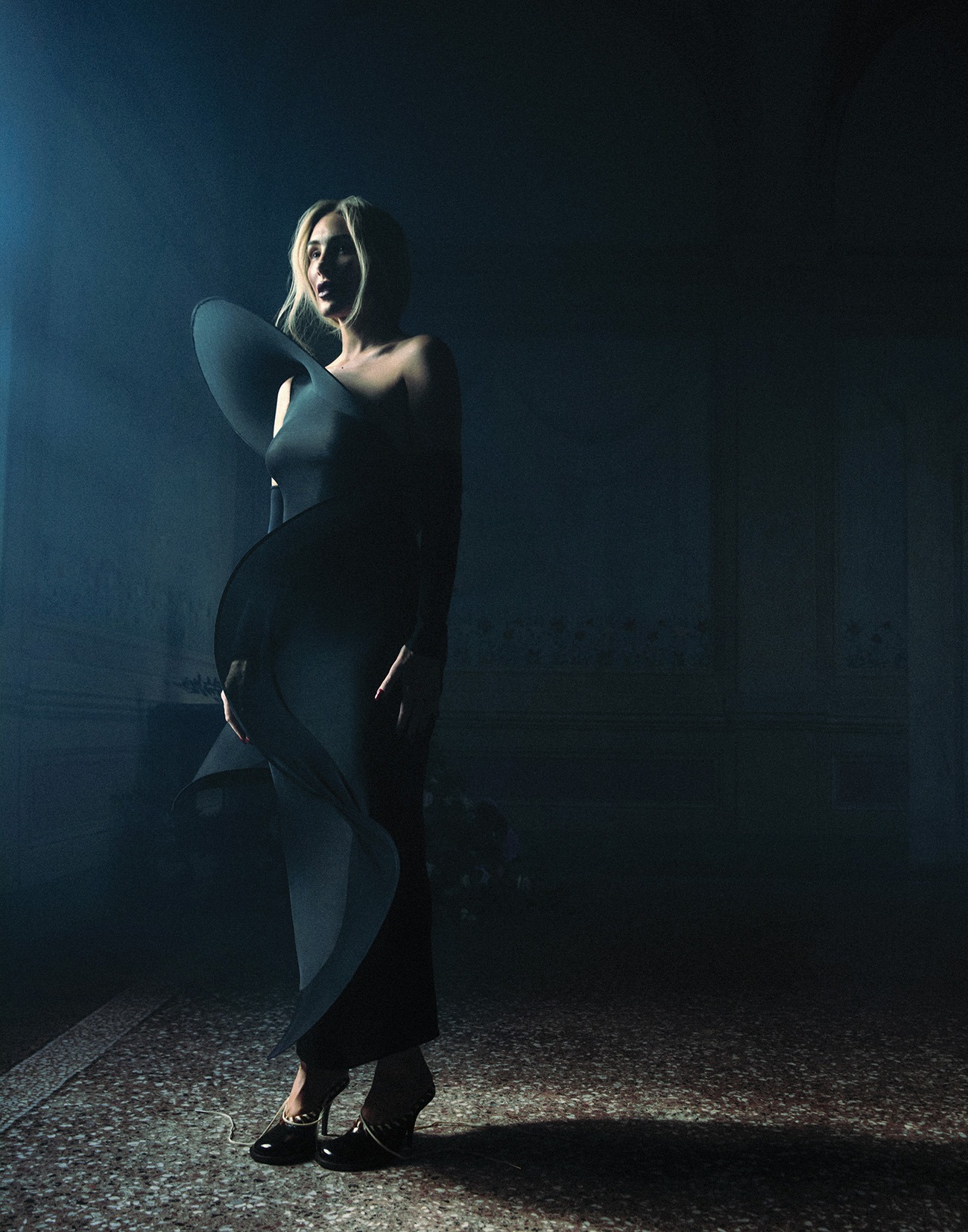
It’s hard to imagine someone like that—I mean, Senidah—in softer, more vulnerable moments. Because of that, I wanted to ask if the Senidah we “know” is ever insecure, nervous—what does she do on days when she isn’t strong? “Not that often,” she laughs. “I mostly get nervous about people—when things aren’t how I want. And I can hold it in for a long time, but then I break. I have to say how I feel, and then it passes. So all the low phases pass once I speak up. On the other hand, I sometimes get tired of everything always happening—the glory is beautiful but exhausting. Then I need a day or two offline—closed in, not going even to the store, cooking at home. I don’t answer the phone. I watch a show or movie. Sometimes I just need silence—some background noise—so my brain empties. It’s essential.”
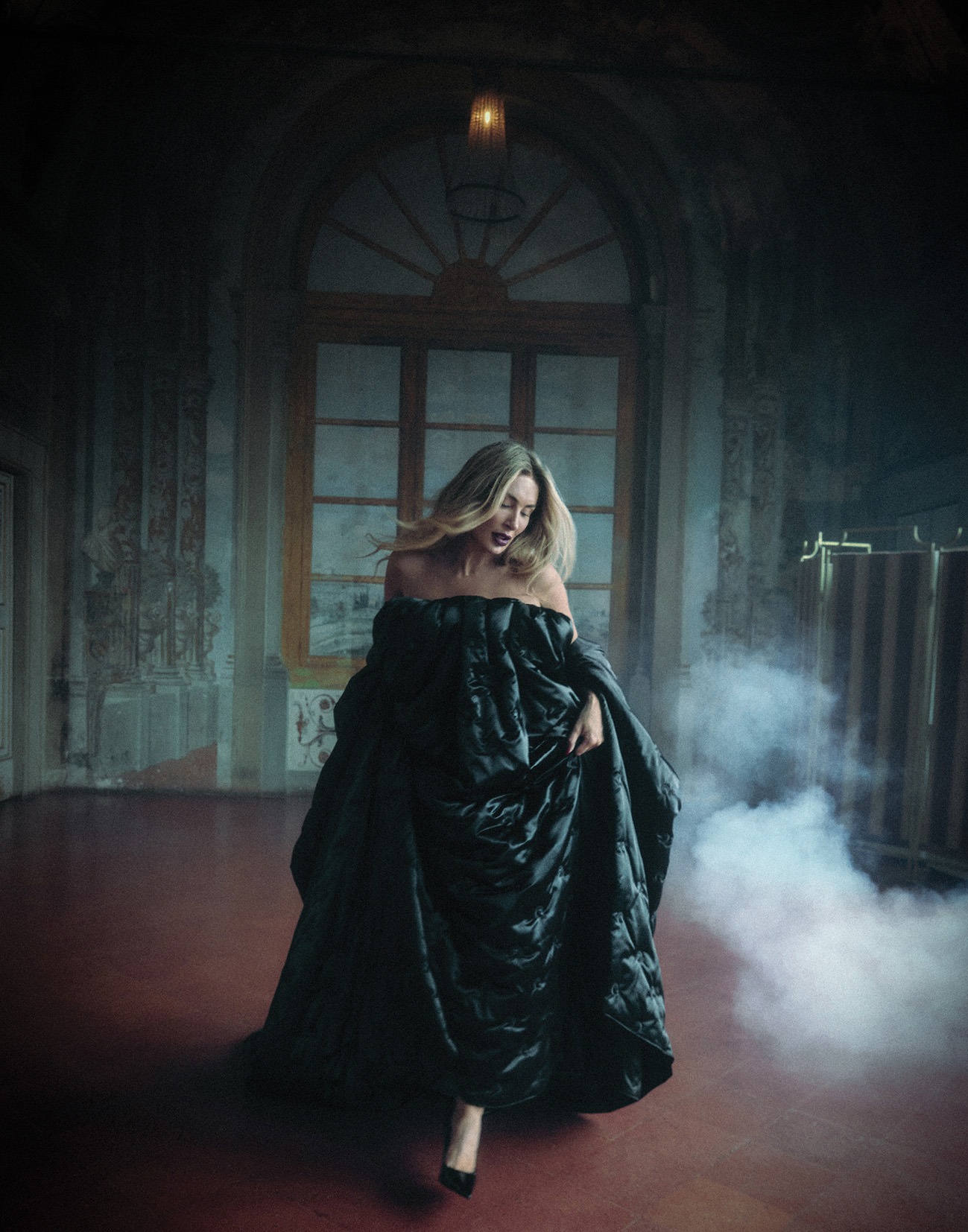
It’s logical—I thought—and I said it: another category she resists is the split between introvert and extrovert. I never know if people who command the stage so confidently feel most at home during creation in the studio—the calm—and on stage—in the roar? “It depends. I really love the latter—being on stage, enjoying my songs, my career. I love that climax. But I also love the zero moment—when things are just beginning, that initial spark of creation. I could stay in the studio for hours. My biggest struggle is the middle—when I start recording; I sometimes wish I could release songs raw, right when they show up. It just doesn’t sound the same—moments when you first open your soul, nothing beats those.”
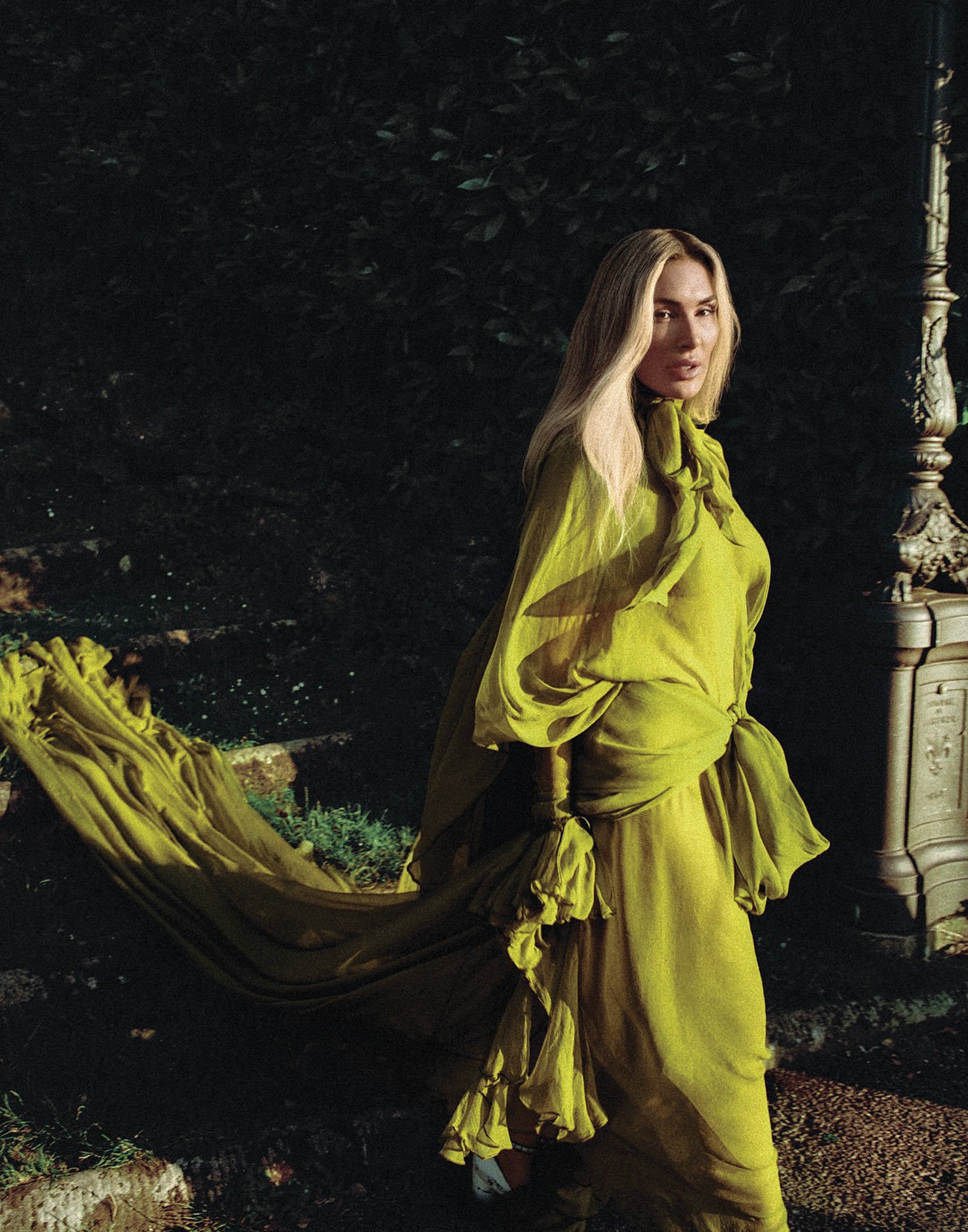
And speaking of soul—when does she feel her soul is most herself? We enjoy her authenticity, but when is she most “Senidah”? I smiled at her answer, but wasn’t surprised. “When I get ready for a show—I really love getting dressed. Since I was a kid I played with Barbies—and now I dress up too,” she laughs. “Sometimes a whole outfit idea comes from a single accessory. I’m usually sporty, and everyday dressing like that for me would be too much—but on stage I love the freedom to experiment. I feel like Wonder Woman on stage.” Like wearing a superhero costume and channeling a new persona every time? “Exactly. Like the song says: ‘All the women in me live…’ There are many of us in there.” Indeed—in one day I saw someone who can seamlessly be a modest, simple conversationalist, a diva on set, and a regal queen of the masses days later. On my way home, I thought the biggest gift, beyond her music, might be proof of how magnificent it is to live all versions of yourself.

Talent: Senidah
Photo: Lois Cohen
Creative Direction: Filip Koludrović
Fashion: Nikita Vlassenko
Makeup: Giulia Carini
Hair: Henry Olivier
Creative Production: Marita Bobelj
Post-Production: White Retouch
Stylist Assistant: Macarena Arias Silva del Pozo
Photographer’s Assistants: Luke van Wijk, Maja Tadla
Video: Rocco Gurrieri, Irene Montini
Location: Villa Corsini a Mezzomonte
